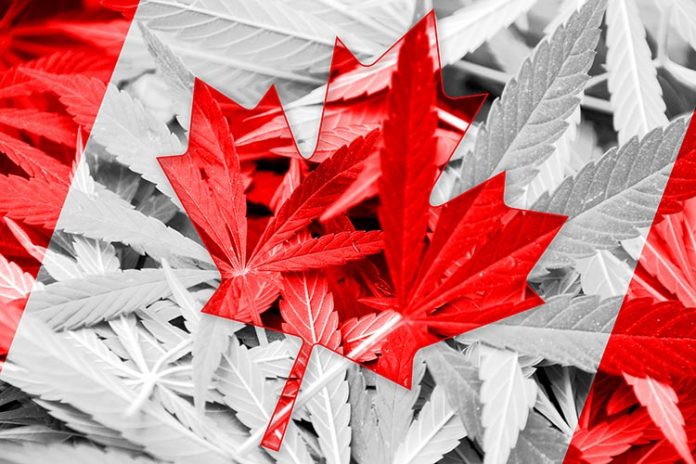In a week, the legal marijuana industry could change forever. With a Senate vote scheduled in Canada for bill C-45 on Thursday, June 7, and a positive outcome seeming very likely, recreational marijuana could soon become legal in our neighbor to the north. If signed into law, legal pot sales could commence as soon as August or September.
What would adult-use cannabis sales mean for Canada’s pot industry? According to various estimates, it would likely add $5 billion or more to the already rapidly growing industry. This would come on top of what growers are currently generating from medical marijuana sales and via exports to countries where medical pot is legal.
As a result of this expected legalization, Canadian growers have been expanding their production capacity at a breakneck pace. These growers want to ensure they have as much as production available as possible when they get the green light, in the hope of securing long-term supply deals with provinces and/or retailers, as well as to forge emotional brand attachments with consumers.
The promise of marijuana production in Canada
This past week, the duo of Emerald Health Therapeutics (NASDAQOTH:EMHTF) and Village Farms International joined the party, so to speak, by announcing in a press release that their 50-50 joint venture, known as Pure Sunfarms, had entered commercial-stage production. Their press release was chock full of promise about what Pure Sunfarms brings to the table, but also contained one terrifying prognostication that should rightly haunt of the Canadian marijuana industry.
The combination of Emerald Health Therapeutics and Village Farms International was a smart one, given that constructing new greenhouses from the ground up is a costly and time-consuming venture. Village Farms, which is a produce grower (tomatoes, cucumbers, and bell peppers), already has existing greenhouse facilities.
On May 14, Pure Sunfarms received an amendment to its cultivation license allowing for commercial production at scale. The 1.1-million-square-foot Delta 3 greenhouse, which should be capable of 75,000 kilograms of dried cannabis at full production in 2020, is expected to have 250,000 square feet of crop planted by July, another 250,000 square feet by September, and entire facility completed by the end of the year.
According to Village Farms, switching its crop from tomatoes to cannabis at the Delta 3 greenhouse will “multiply revenue per square foot of growing capacity 10 to 15 times.” Also, “EBITDA margins leap up from mid-single digits currently to 50% or more with cannabis.” If the 3.7 million square feet of adjacent land to Delta 3 is also built out for marijuana production, Emerald Health and Village Farms would be capable of approximately 300,000 kilograms of production per year. Based on highly fluid production figures within the industry, that’d be good enough for the third-highest output in Canada. Of course, it’d also take years to reach full production capacity, if Pure Sunfarms chose to expand.
The danger that lies ahead
Yet for as promising as the cannabis industry in Canada might appear, there are risks. The same press release highlighting the benefits of cannabis production at Delta 3 also pinpoints a serious concern. Here’s an excerpt from the press release that should worry pot producers and investors:
The company projects Pure Sunfarms will multiply revenue per square foot of growing capacity 10 to 15 times by switching from produce to cannabis. EBITDA margins should leap up from mid-single digits currently to 50% or more with cannabis. The company asserts these are conservative numbers, as are its production estimates. Its long-term revenue model is based on a cannabis flower sale price of $2/gram, which is currently well below market but reflects the strong belief by the company, as well as many experts, that cannabis flower will commoditize over the coming years.
The first part, which was mentioned in the previous section, is great news. But note that part about the company’s long-term revenue model assuming that dried cannabis prices sink to $2 per gram over the long term? That’s bad…really, really bad. Assuming this figure to be in U.S. dollars, since Village Farms reports its operating results in U.S. dollars, and this press release in question was disseminated by Village Farms, we’re talking about cannabis prices sinking from about $6.65 per gram now to $2 per gram in Canada over the long run. That’ll decimate the margins of any grower not able to use economies of scale to their advantage.
It also highlights the importance of diversifying growing operations beyond just dried cannabis. Cannabis oils and extracts, for example, are a niche product with a smaller consumer pool. However, they also command a consistently higher price point and are far less likely to be commoditized. This means they’re likely to remain a higher-margin item than dried cannabis. Unless Pure Sunfarms makes a concerted effort to introduce more diversity into its growing operations, Emerald Health and Village Farms, even with economies of scale, could struggle due to the commoditization of dried cannabis.
As tempting as pot stocks might appear, it’d probably be wise from an investment standpoint to let the industry mature a bit before you even consider placing your bets.














